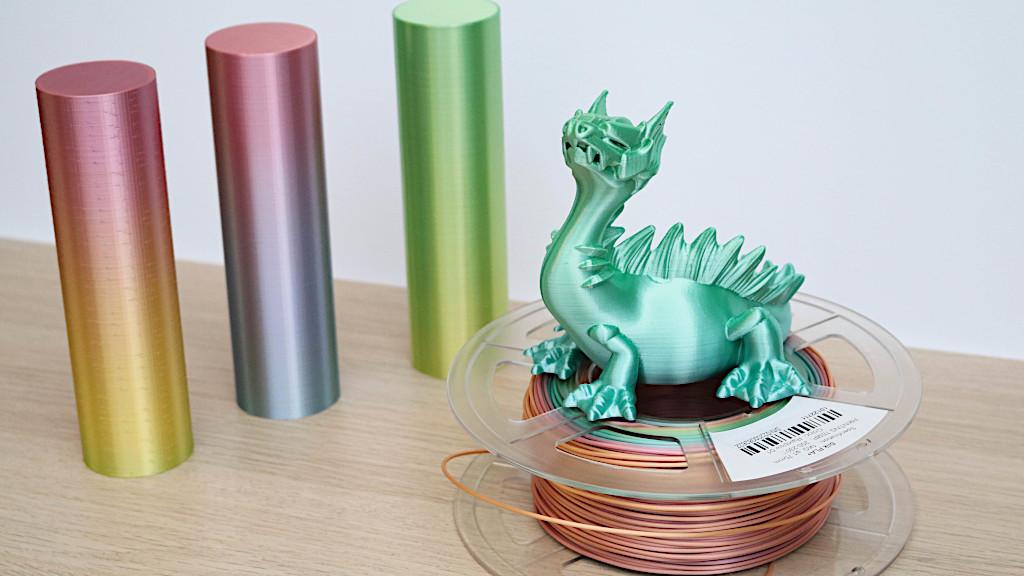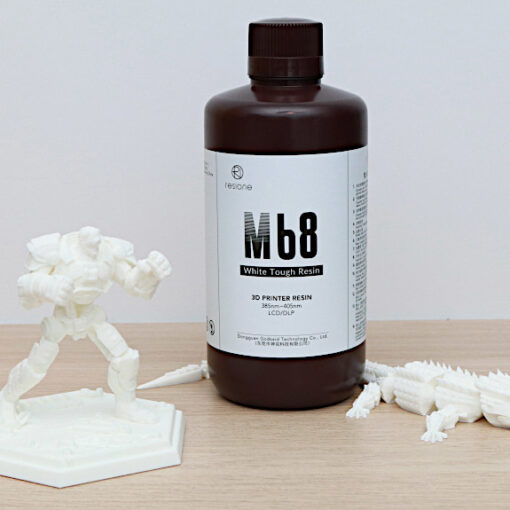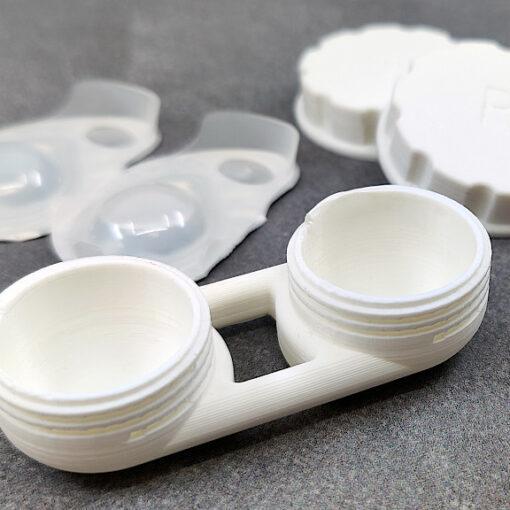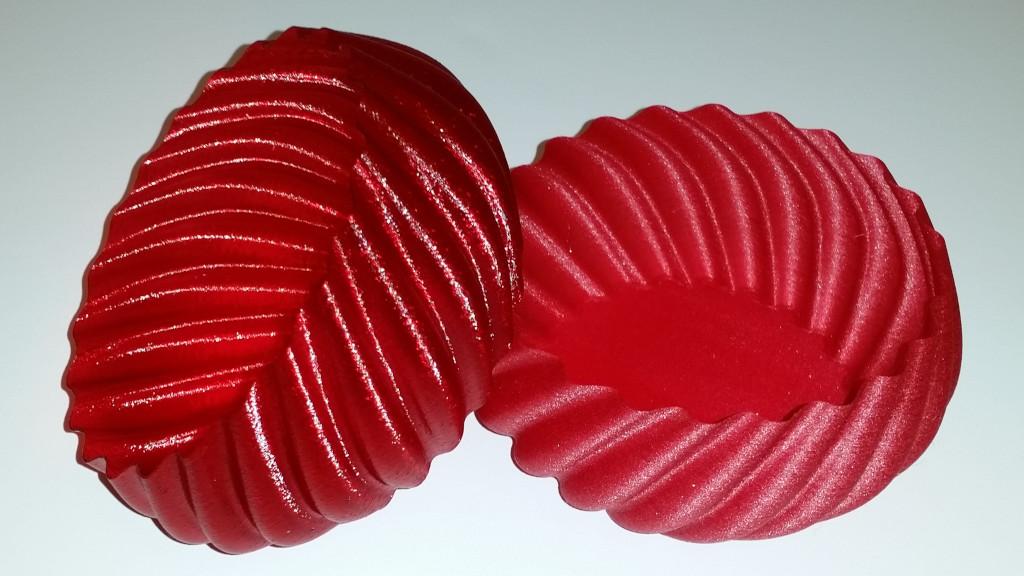If you’ve ever wanted to print a model with multiple colors on a single extruder 3D printer without changing materials mid-print, the Rainbow Silk PLA filament is definitely worth checking out. Unlike most spools of 3D printer filament which contain a single color consistently throughout the spool, the Rainbow PLA features a gradient of multiple colors that transitions throughout the spool of material. Like other Silk filaments, such materials have an extremely shiny surface finish. Printed parts have an almost metallic sheen to them, which gives the models a finished look, but can, unfortunately, amplify minor defects due to how consistent the rest of the print looks.
Features & 3D Printing Settings
PLA – Polylactic Acid
Brands/Shops: SUNLU, Enotepad, Amolen, MIKA3D, CC3D, etc.
Filament Diameter: 1.75
Color Change approx. every 15 meters
3D Printing Temperature: 200-230C
Bed Temperature: 60-80C
3D Printing Speed: 50-100mm/s
Affiliate links:
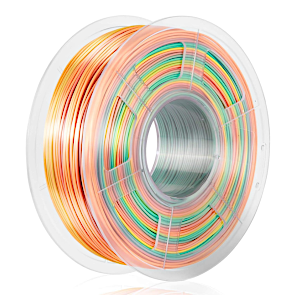
SUNLU Rainbow Silk PLA Filament on Amazon
Experiments with Rainbow Filament
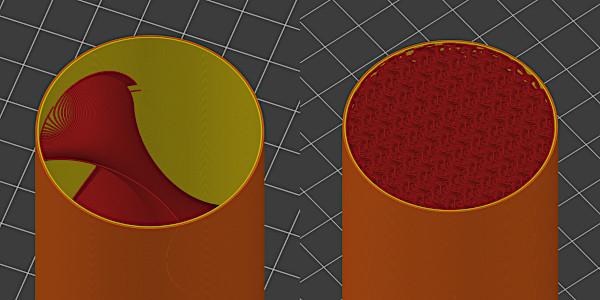
(Screenshot: PrusaSlicer)
Since the material changes colors throughout the spool, the speed at which the colors change is entirely dependent on how much material is used during the print. Prints that use more material will change color at a faster rate than prints that only use a small amount of material. To test this theory, I set up an experiment to see how much influence over the transition speed I could have by altering the properties of the print.
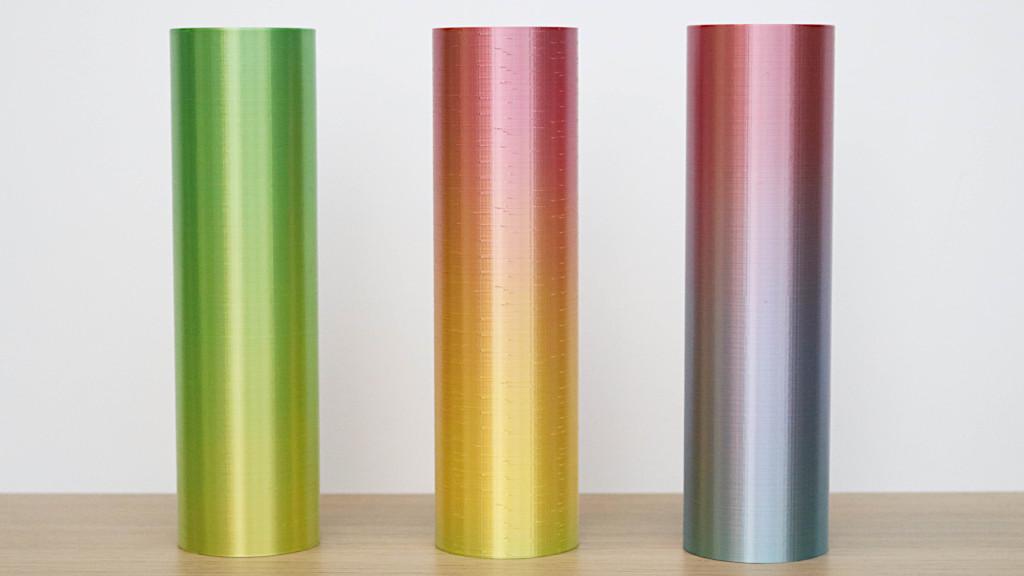
(Photo: Andrew Sink)
The Yellow-to-Green cylinder was printed using a very light infill (1% Gyroid) and used a total of 36.59 grams of material, while the Yellow-to-Red cylinder printed with a more dense infill structure (20% Gyroid) and used a total of 114.92 grams of material. The denser print transitioned much more quickly and went through two complete color changes during the printing process.
Due to the fact that the Silk PLA+ has an extremely reflective and shiny surface, I also noticed that “randomizing” the seams resulted in very visible defects at each layer where the toolpath would start and stop.
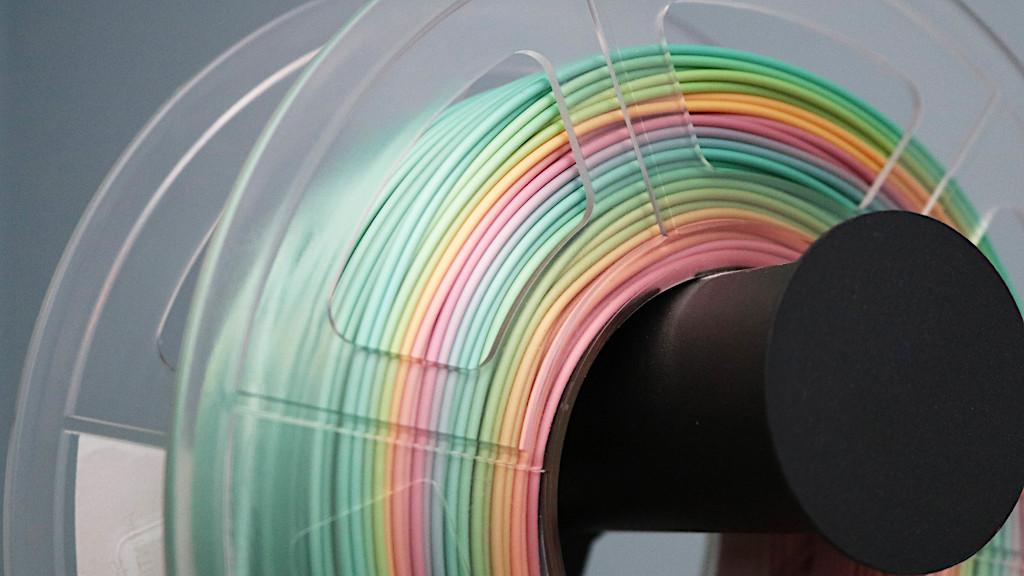
(Photo: Andrew Sink)
How to print in one color using Rainbow filament?
To get a feel for what this transition looked like on a model with a higher level of detail, I printed out the Aquaticus Dragon by Makerbot on the Mingda Rock 3 Pro. The Rock 3 Pro is the most recent large-format 3D printer released by Mingda, and works well when printing Silk PLA+ due to the BMG clone direct drive extruder and e3D clone hot end. Using a .2mm layer height and using PrusaSlicer default settings, the model used a total of 32.91 grams of filament and printed in just under four hours.

(Photo: Andrew Sink)
Because the overall amount of material used wasn’t significant, the color change is very subtle and gradually changes from a saturated green to a yellow-green mix. To increase the speed of the color transition, this model could have been printed with a higher level of infill or increased in size to increase the total amount of material used.
- According to 3D Print Cost Calculator, Aquaticus Dragon will cost $ 1.49 to print.
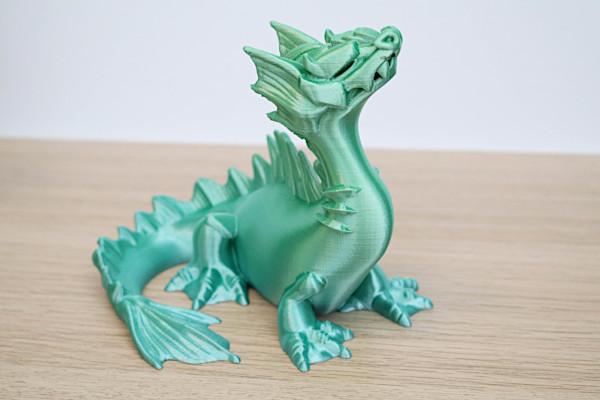
(Photo: Andrew Sink)
Where to Buy Rainbow Silk Filaments?
The filament I used is Enotepad Silk PLA+, it is currently available for sale directly from their site as well as on Amazon. You can typically find such Rainbow filaments in a range between $25-$30, which falls into the price range of a spool of a high-quality PLA material.
- Buy Silk Rainbow PLA on Amazon (affiliate link)
- Official SUNLU/Enotepad Website
- Buy Silk Rainbow PLA on Amazon
For the price, it’s definitely worth buying a spool just to experiment if you are interested in making multicolor parts without having to paint or dye your prints or switch material mid-print. I was impressed with the overall quality of the material, and with a little bit of planning before a print (material usage, transition colors, etc.), I was able to make some very interesting-looking parts.
3D Printing in TTYD3D rainbow PLA
I printed the Plunderbuss Pete model on Longer LK5 Pro 3D printer using the ‘Standard Quality’ print setting in Cura using TTYD3D rainbow PLA filament for this model.
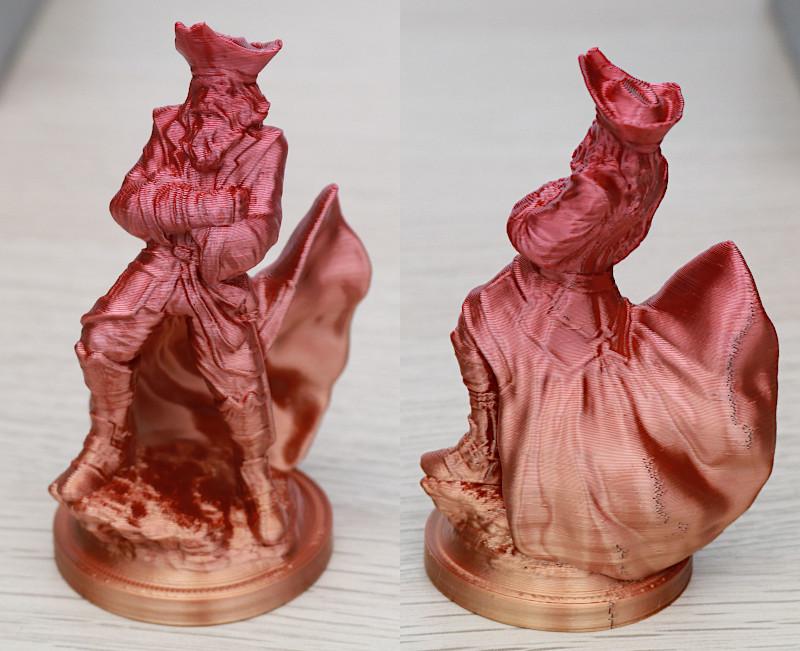
(Image: Andrew Sink)
Lampshades in Silk PLA
Using such a filament for lampshades will fill your room with delightful colors. Here’s how Max printed tree texture vases and repurposed them as lampshades. Find more information and images here.
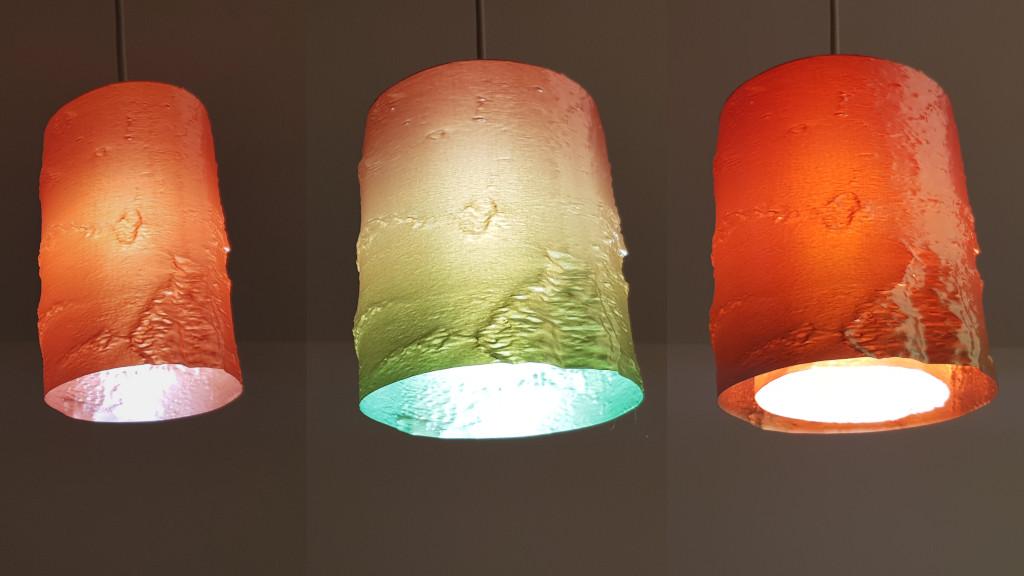
©3DWithUs – Print & Photo: Max Funkner
Disclaimer: We can’t stress enough that every electrical appliance is a potential fire hazard if treated/maintained inappropriately. Therefore, extra care has to be taken while undertaking any 3D printing DIY project that involves electricity.
Read More: Color Changing Thermochromic Filament
Another interesting desktop 3D printer material to try is the color-changing on temperature filament. Manufacturers often surprise us with something new and unusual, like adding sparkles or multicolored segments on the spool. This time they got our attention by introducing a thermochromic filament, which changes its color depending on the temperature.
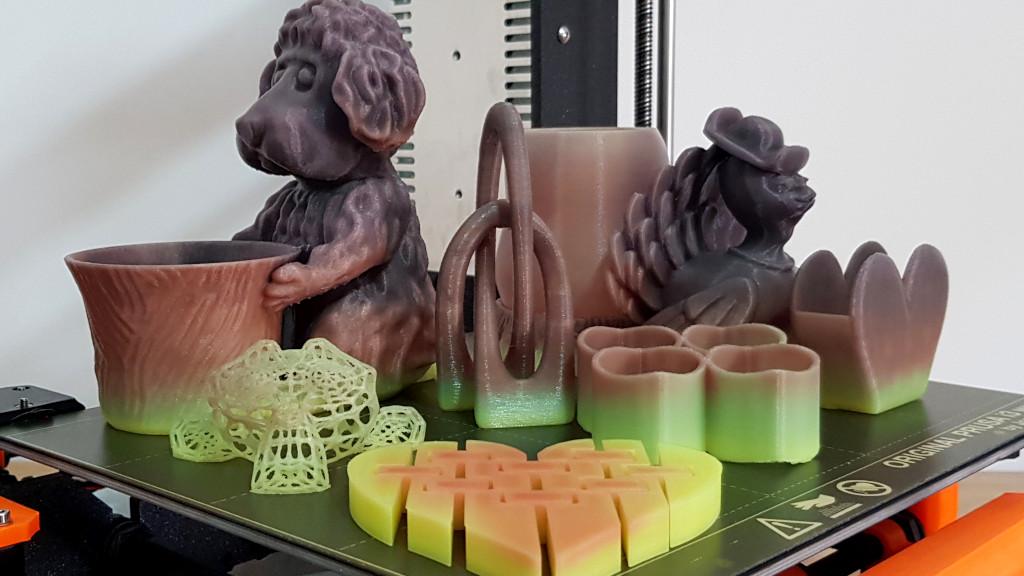
(Photo: 3DWithUs)

